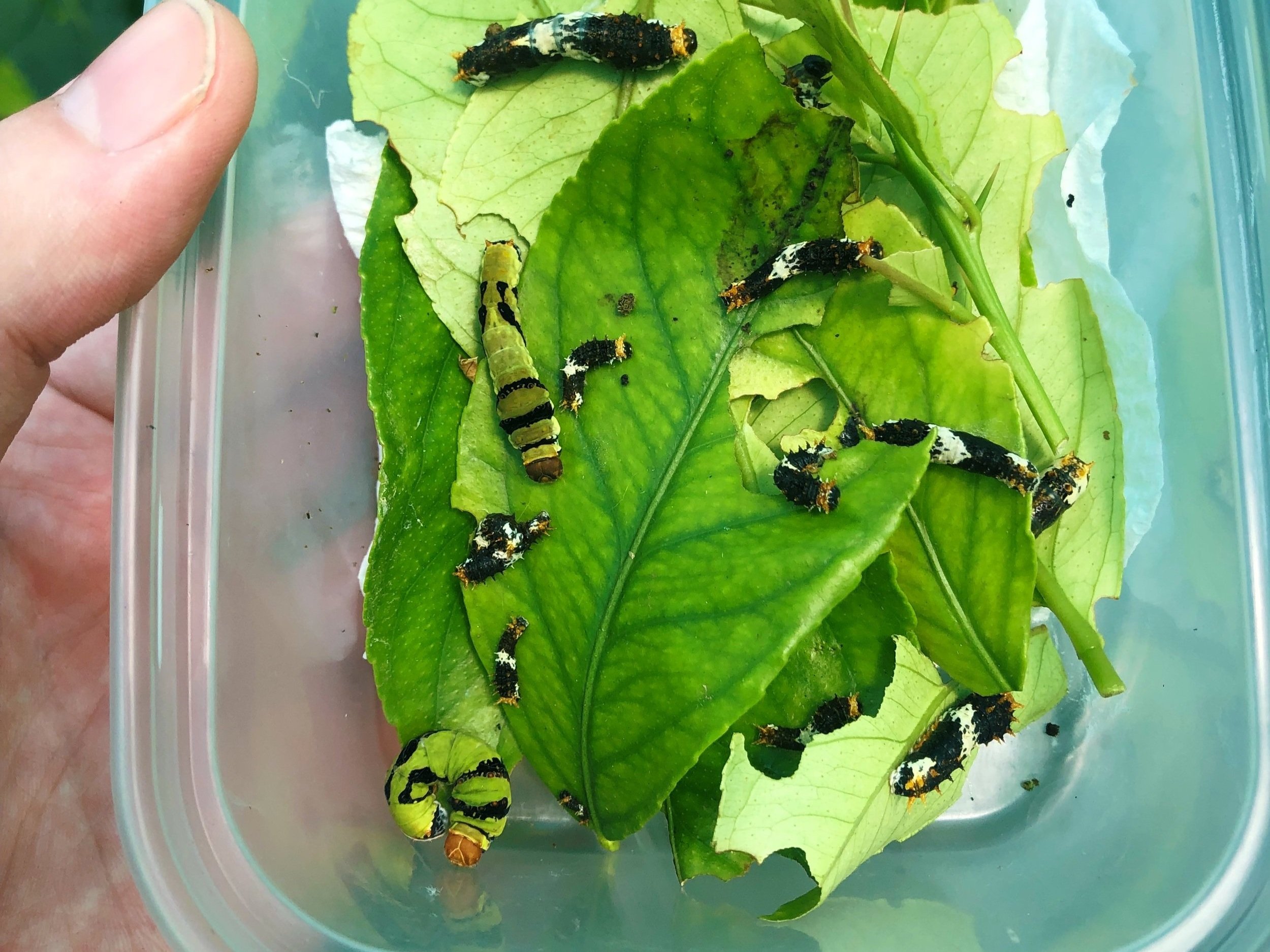Citrus Swallowtail Care Guide
This guide is written in regard to Citrus Swallowtail Butterflies (available to order here), however the methodology can be applied to most other Swallowtails using appropriate host plants.
The photo below shows a female Japanese Peacock (Papilio dehaani), often included in the citrus mix.
Eggs should be kept in closed plastic containers to prevent them drying out. Typically, eggs will start out a yellow/cream colour, darkening to black as they near hatching. The darkening indicates the caterpillar is fully developed within the egg, and should then hatch within a couple of days.
You can add leaves to their container once the caterpillars hatch, but do not add any prior to this as leaves will release moisture and this often causes the eggs to mould before hatching, killing them. Once the larvae have established and are feeding well, they can be moved to mesh cages or larger plastic containers if preferred. Additionally, they do very well on living host plants if you have some potted or in a greenhouse.
If you purchased the Citrus Swallowtail eggs/caterpillars, they will accept any of the following host plants: Choisya, Skimmia, Citrus (Lemon, Orange, Lime etc.), Phellodendron, Zanthoxylum, Ruta, and probably other related plants.
Choisya and Skimmia are very common plants in the UK, grown as ornamentals due to their attractive foliage and the red berries of Skimmia. Therefore, they make an extremely convenient host plant - there is a good chance of these plants growing in your neighbourhood, but they can also be readily purchased from garden centres around the country or online.
The photo above shows citrus swallowtail caterpillars in a variety of stages - typically the first three or four stages resemble bird droppings, later turning green in the final stage before pupation. When disturbed, swallowtail caterpillars project a fork-shaped gland from above their head, known as an osmeterium, which indicates to predators that they are distasteful or toxic, and releases a particular scent - it smells quite sweet to me but others report a foul smell. Nonetheless, this is rare in captivity, even when handling the caterpillars, and poses no danger to humans!

After about 3 or 4 weeks, the caterpillars will be fully grown and ready to pupate. At this point, they will secure themselves to the host plant or sides of their enclosure. Unlike many other butterfly species which hang upside down to pupate, the swallowtail caterpillar constructs a sort of sling out of silk, and pupates facing upwards.
I would recommend leaving the pupae in situ, as there is no need to move to another enclosure - they will do very well under normal room conditions, however would benefit from misting daily to avoid drying out. The adult butterfly will then emerge about 3 weeks later - this part can be really fun as you get to see the different varieties of swallowtails, which can be spectacular. You can also reference the care guide for pupae and cocoons here.
Adult butterflies can be cared for according to this guide. They are very straightforward, simply requiring ample space to fly and a food source.



